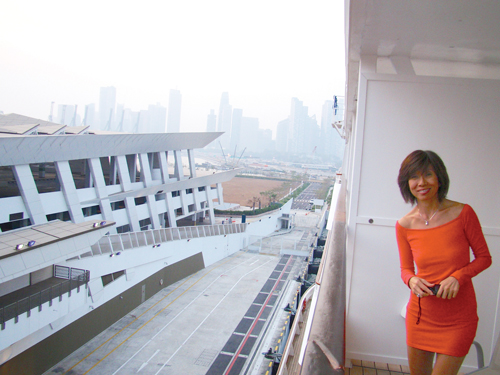 There is no need to build swanky cruise terminals. What’s more important is for destinations to manage the supply chain on which their chance of turning the transient cruise passenger into a returning tourist depends.
There is no need to build swanky cruise terminals. What’s more important is for destinations to manage the supply chain on which their chance of turning the transient cruise passenger into a returning tourist depends.
Ever since the world cruise industry started scanning the horizons for new markets, Asian destinations have been urged to build better ports. The more developed cities such as Singapore, Hong Kong and Shanghai rose to the occasion, building ports that could handle behemoths, like airports could handle Airbus A380s. But often, the lament is it is quite pointless for, say, Singapore, to build a fancy terminal if the neighbouring ports are in shambles, since cruising is regional.
From the perspective of a cruise passenger, as I was recently, ports – as in terminals and piers – are mere infrastructure. As with airports, speedy and hassle-free passenger-handling capability is what counts – if it happens to be a beautiful facility, that’s great, but no one lands at a port or an airport because of it.
From the viewpoint of cruise lines angling for sales, ports of call are another word for destinations, and they are fond of describing every port as exotic and romantic. Alas, South-east Asia by cruise is not too exotic or romantic, as I found on my recent voyage.
For example, because their ports were located in the boondocks, it took more than an hour to get to Phuket town, and nearly two to Yangon city centre. At the former, the mafia seems to be controlling which taxis could enter the port, while at the latter, luxury passengers were cramped into a coach in a manner that was unsafe.
Hours were spent in a car or coach passing through the drabbest areas of the destinations. In Yangon, the coach operator dropped off passengers at the marketplace, when the Shwedagon Pagoda would have been a better spot for these mostly Western visitors. The thought of taking a cab in a crazy traffic jam to get to the pagoda, never mind the sweltering heat, made the passengers stay put at the market. Little, if any, was spent on F&B or shopping as they eagerly waited for the next coach to take them back to the ship.
To sum up, overall, the shore experience was a huge disconnect with the high standards on board the ship.
Much needs to be done to narrow this imbalance. As ships usually dock just for a day or two, a cruise affords only a window to a destination. If impressions are poor, a destination would likely lose customers who would write it off and tell friends it’s not worth visiting. Chances are, ships that are making an effort to call on South-east Asia would avoid those ports that they realise do not pass muster.
Many ASEAN destinations are now eager to increase the cruise pie. To them, I’d say no need to build swanky cruise terminals, efficient ones will do and site them in the best locations as, say, Penang has done with the Swettenham Pier being steps away from the town’s heritage streets. What’s more important is for destinations to manage the supply chain on which their chance of turning the transient cruise visitor into a returning tourist depends. In this, the travel agencies which handle shore excursions are key. For instance, couldn’t NTOs and cruise lines encourage them to create tours that are tailored to give cruise passengers the best possible impressions in the short time they are in port?



 There is no need to build swanky cruise terminals. What’s more important is for destinations to manage the supply chain on which their chance of turning the transient cruise passenger into a returning tourist depends.
There is no need to build swanky cruise terminals. What’s more important is for destinations to manage the supply chain on which their chance of turning the transient cruise passenger into a returning tourist depends.
















